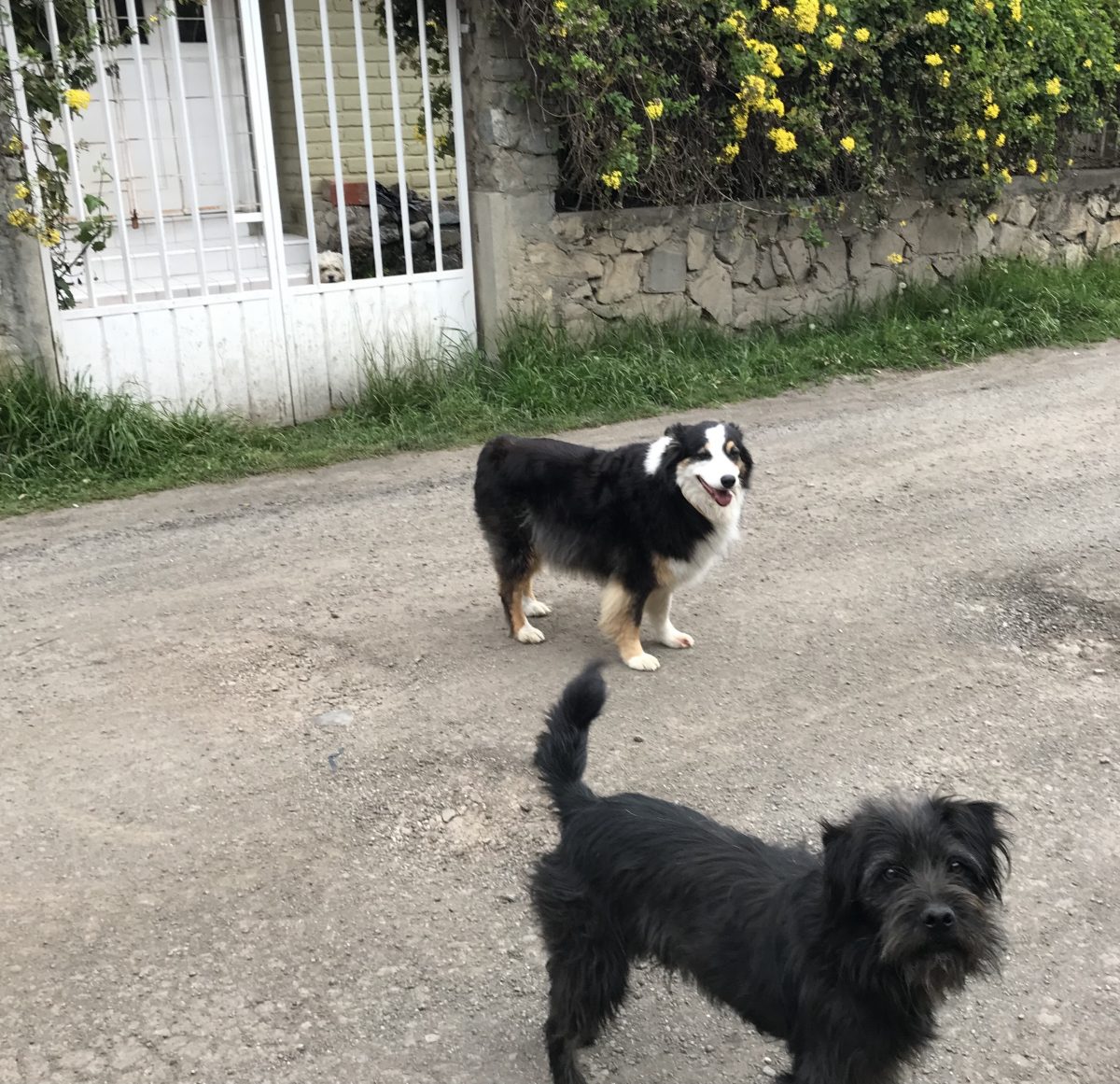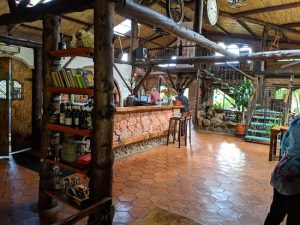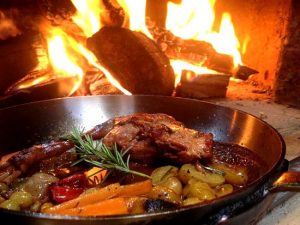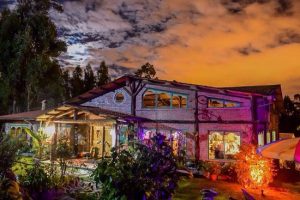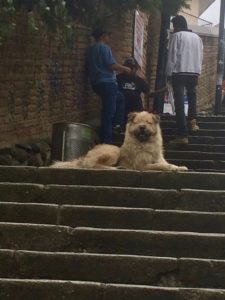 Street dogs are uncommon in downtown (El Centro) Cuenca but become more prevalent as you get into the outlying areas. Still, there are not as many as we encountered in Cotacachi, Ecuador, until you get to the outer areas of Cuenca. In our area of Cuenca, Rio Amarillo, it seems like everyone has a dog, either running loose on the street, or captive behind a fenced or gated yard.
Street dogs are uncommon in downtown (El Centro) Cuenca but become more prevalent as you get into the outlying areas. Still, there are not as many as we encountered in Cotacachi, Ecuador, until you get to the outer areas of Cuenca. In our area of Cuenca, Rio Amarillo, it seems like everyone has a dog, either running loose on the street, or captive behind a fenced or gated yard.
Rio Amarillo is a barrio about two miles west of El Centro. There is a mix of really nice houses and some plain ones. It’s a very mixed income neighborhood, but a very nice one. There are lots of dogs here.
Many people in Cuenca seem to own dogs for one reason…property protection. For a majority, they are not pets, companions, or “furry friends” here. Some live on the street or sidewalk in front of businesses, some wander the street in front of their homes, and others are kept behind fenced in areas. Yet others are staked or chained near the property they are there to protect. The neighbor behind us has a dog on a two foot rope, with a doghouse, near their guinea pig pens. Since there are stray cats in the area, we assume his sole purpose is to protect the guinea pigs from the cats. The guinea pigs here are food for the household. That dog has no freedom.
It’s unusual to see an Ecuadorian walking a dog on a leash but we have seen a few. When we walk ours down the streets, the street dogs and the ones behind the gates go berserk barking and growling. When we take a walk without our dog, the other dogs don’t bother us. I’m guessing it’s a territorial thing.
Many of the dogs we’ve encountered, both on the street and behind fences, look like they could use a bath. I’ve heard that most people never bathe their dogs in their lives. Some of them are downright mean, while others try to look mean, but you know they are just posing. I learned not to reach out to pet any of them, especially the raggedy poodles. Dirty, mean little nippers they are – most that we’ve seen. Again, most of the dogs seem unbothered by us, unless we have our dog with us.
It is painful to see how badly many dogs are treated around here. A dog can be a wonderful friend and companion if treated properly, and can and will still protect property if needed. Some locals don’t see this. They show little to no compassion for dogs and because the dogs are taught to be mean and aggressive, many are afraid of dogs.
We have a loving, very friendly dog who likes to meet people. When we walk her here, people avoid us out of fear they will be bitten. Many are surprised and pleased that Star, our dog, is so loving and friendly. Many Ecuadorians are amazed at how well trained and behaved she is. At our hostel in Quito, the staff fell in love with her, and even all had their pictures taken with her before we left. Star was a star to them.
As more gringos move in with their dogs and more locals see that there is another way to live with them, things should change for the better. I acknowledge that the reason many dogs go uncared for is because it takes every penny for many locals to just feed their families, and pets need to be low on the priority list. I also will note that many of the dogs on the street are very friendly and street smart. Most dogs brought from the US would never survive the way these savvy dogs do, after years of cushy treatment.
There is a reason for the way things are done in every culture and we acknowledge, that while we may not like the way some of these dogs are treated, this is the native culture and it is not our place to judge. We will continue to treat our own dog and the friendly dogs we meet with love and compassion and maybe that example will be seen and followed by others.
